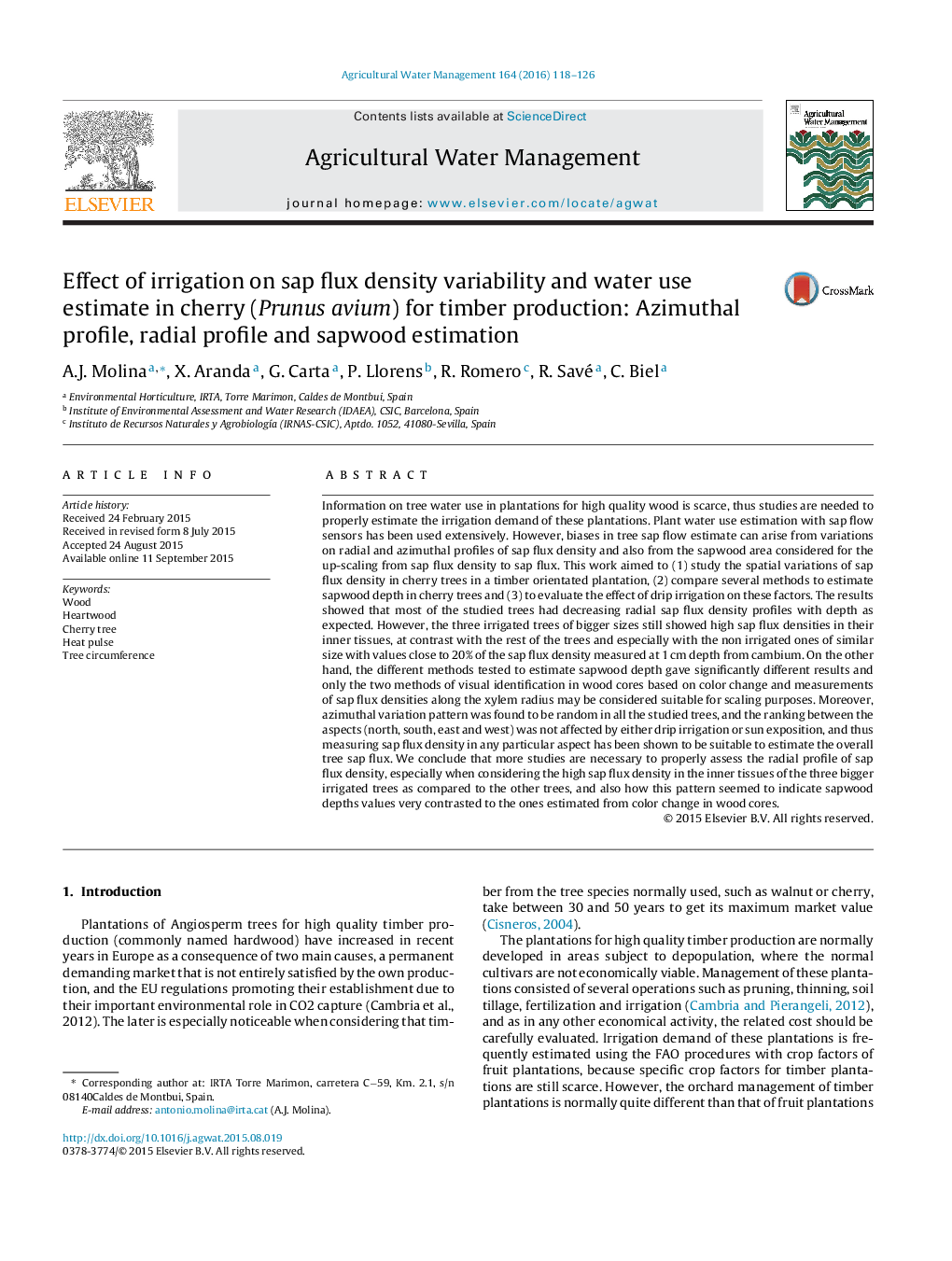| کد مقاله | کد نشریه | سال انتشار | مقاله انگلیسی | نسخه تمام متن |
|---|---|---|---|---|
| 6363666 | 1316371 | 2016 | 9 صفحه PDF | دانلود رایگان |

- Irrigation effect on sap flux density profiles of cherry trees was tested.
- Different methods to estimate sapwood depth were compared.
- Linear decrease of sap flux density with depth was found for most of the trees.
- Azimuthal profile of sap flux density was random and its variation was not affected by irrigation.
Information on tree water use in plantations for high quality wood is scarce, thus studies are needed to properly estimate the irrigation demand of these plantations. Plant water use estimation with sap flow sensors has been used extensively. However, biases in tree sap flow estimate can arise from variations on radial and azimuthal profiles of sap flux density and also from the sapwood area considered for the up-scaling from sap flux density to sap flux. This work aimed to (1) study the spatial variations of sap flux density in cherry trees in a timber orientated plantation, (2) compare several methods to estimate sapwood depth in cherry trees and (3) to evaluate the effect of drip irrigation on these factors. The results showed that most of the studied trees had decreasing radial sap flux density profiles with depth as expected. However, the three irrigated trees of bigger sizes still showed high sap flux densities in their inner tissues, at contrast with the rest of the trees and especially with the non irrigated ones of similar size with values close to 20% of the sap flux density measured at 1Â cm depth from cambium. On the other hand, the different methods tested to estimate sapwood depth gave significantly different results and only the two methods of visual identification in wood cores based on color change and measurements of sap flux densities along the xylem radius may be considered suitable for scaling purposes. Moreover, azimuthal variation pattern was found to be random in all the studied trees, and the ranking between the aspects (north, south, east and west) was not affected by either drip irrigation or sun exposition, and thus measuring sap flux density in any particular aspect has been shown to be suitable to estimate the overall tree sap flux. We conclude that more studies are necessary to properly assess the radial profile of sap flux density, especially when considering the high sap flux density in the inner tissues of the three bigger irrigated trees as compared to the other trees, and also how this pattern seemed to indicate sapwood depths values very contrasted to the ones estimated from color change in wood cores.
Journal: Agricultural Water Management - Volume 164, Part 1, 31 January 2016, Pages 118-126